Originally built in the second century as a mausoleum for Emperor Hadrian, Castel Sant’Angelo (Castle of the Holy Angel) was later transformed into a large castle where popes could take refuge in turbulent times.
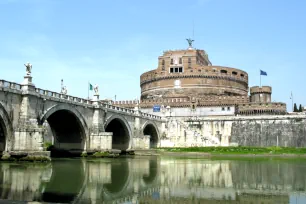
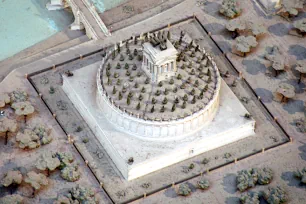
Castel Sant’Angelo, situated on the right bank of the Tiber river, has had a turbulent history, even by Rome’s standards. During its many years of existence, the building functioned first as a mausoleum, then became part of the city wall and later was turned into a fortress before it functioned as a papal residence and finally as a barracks and military prison. It is currently a national museum.
Hadrian’s Mausoleum
Castel Sant’Angelo was originally built by Emperor Hadrian as a mausoleum and housed the remains of Hadrian and his successors up to Caracalla. Its design was inspired by that of the Mausoleum of Augustus, built a century earlier. Construction of the mausoleum started in 123 AD and finished in 139 AD, during the reign of Hadrian’s successor, Antoninus Pius.
The building consisted of a square 89-meter-wide (292 ft.) base on which a cylindrical colonnaded drum with a diameter of 64 meters was constructed. The drum was covered with an earthen tumulus topped with a statue of Hadrian driving a quadriga.
The mausoleum was connected to the city at the other side of the river by a newly constructed bridge, the Pons Aelius. The bridge is now known as the Ponte Sant’Angelo. Its many statues were added later, during the Baroque period.
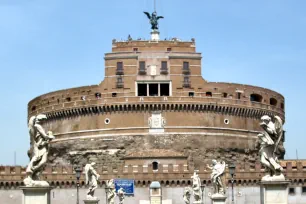
Papal Refuge
Between 270 and 275 AD, during the construction of the Aurelian Wall, Hadrian’s mausoleum was fortified and incorporated in the defensive wall around Rome. From that point on the building which had become known as the Castel Sant’Angelo was slowly turned into a fortress and in 1277 it was acquired by the papacy who used the building as a refuge in case of danger.
A secret corridor, known as the Passetto di Borgo, connects Castel Sant’Angelo with the Vatican. The corridor was used by pope Clement VII and his Swiss Guards to take refuge from Charles de Bourbon’s army during the sack of Rome in 1527.
Interior
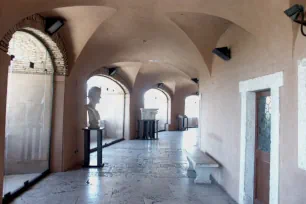
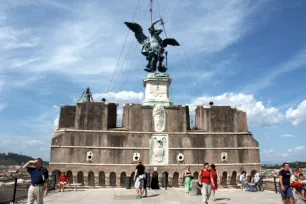
But even in this fortress, the pontiffs made sure they were well housed. The papal apartments in the Castel Sant’Angelo feature beautiful rooms decorated with many frescoes. Below the apartments are several floors which include prisons and even a torture chamber. A spiraling corridor, part of the original mausoleum, leads to the lower levels of the building.
Angel Statue
At the top of the fortress, overlooking the panoramic terrace, stands a statue of an angel, built by the eighteenth-century Flemish sculptor Pieter Verschaffelt. The bronze statue replaced an earlier, marble version.
The statue depicts the archangel Michael who, according to legend, appeared on top of the fortress in the year 590 and miraculously ended the severe plague that had infested the city of Rome. After the purported event, the building was renamed Castel Sant’Angelo – literally translated ‘Saint Angel Castle’ – in honor of the archangel.
- Next: Appian Way
- More Rome Ancient Sights
- More Sights & Attractions in Rome

